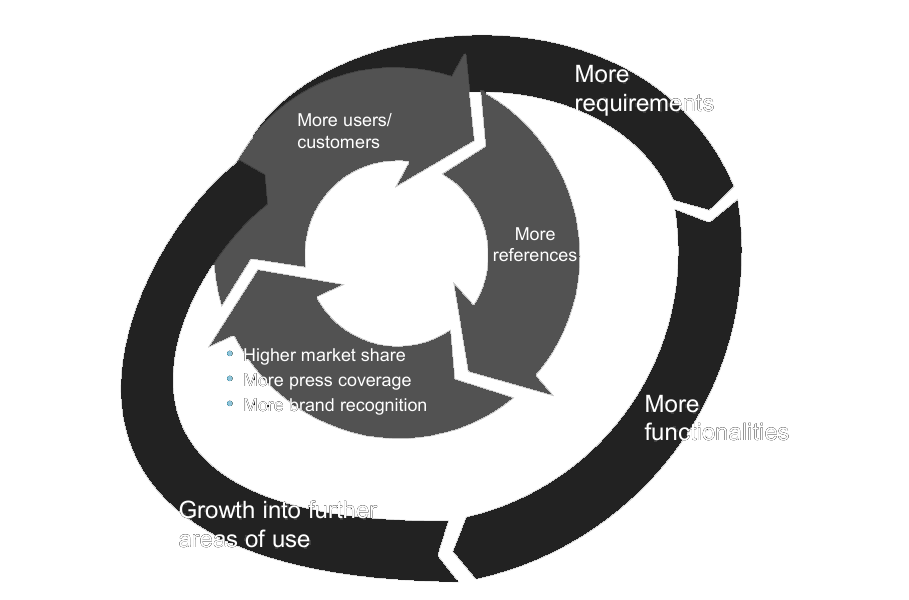Technology Selection
Technology Considerations
New Developments: trade-off between breadth (how many) and depth (how detailed)
Capabilities: overlap, compliment & conflict with others, how much is new functionality
Stability & Maturity: how stable & mature is it, how many unknows are there
Architectural Fit: how well does it integrate with others, how much effort & risk to integrate
Availability of Skills: how overlapping are needed skills with what is available
Attractiveness: value, experience, complexity to acquire skills
Technology Capabilities

Very Complex Trade-Offs
- high uncertainty about evolution of req. and technology solutions
- tech. solutions often impact other tech. areas
View Comparison

One Technology Solution (IT Management)
+ less solutions & suppliers to manage
+ simpler decision making & enforcement
- more difficult to choose initially
- stronger dependence on single supplier
Different & Specific Tech. Solution (IT Staff)
+ solution more tailored to problem at hand
+ less to learn
+ less to coordinate with others
- only relevant in this field
Stability and Maturity
Potential Issues
Potential Issues
Product
- functionality inexistent or unexpected
- defects or outages
- requires more capacity than assumed
Impact
⇒ cannot be used as-is
- time delay (wait for new releases)
- cost increase (rework, integrate)
Supplier
- unable to make improvements
- does not continue development
- acquired & discontinues product
⇒ cannot use product
- time delay (wait for improvement)
- forced migration
Assess Stability & Maturity
- Brand Recognition
- Market Share
- IT Research assessments
- proof of concept project
- References
Self-Reinforcing Cycles & Growing
Growing Companies
Large IT Research Companies / Consultants
Gartner, Forrester, IDC
amplify self-reinforcing cycle
- Gartner Magic Quadrant (every year)
- CIO surveys (what is important, where do you want to go?)
- IT Trends (what are large corporations doing)
- Technology Briefs (analyze products & suppliers)
Large Companies & Oligopoly
- only few large providers through cycles of adoption
- IT suppliers avoid monopoly to escape anti-trust
- dominating product is function rich
- on market for a long time, becomes hard to change
- tends to be technically outdated
- small companies can’t compete
- don’t gain traction
- bought up
- dominate in self-reinforcing cycle
Success with new IT Product
General Approach
- Minimal Viable Product
- Great use case
- strong technical capabilities
- room for experimentation
- quick feedback cycle with users
- First References
- early adopters
- Rapid Scale-Up
- large amount of capital
- ability to quickly scale up
go from 0.1% to 5-10% very quickly
others can’t catch up
lots of capital needed
- Growth into neighboring Fields
"Tricking" the System
Large IT companies leverage company brand:
- sell immature or weak products
- even if there exist superior products of small competitors
this works as buyers know that the other product is very good
Troubles Ahead
- suppliers go from software provider to service provider
- services go over into cloud
- customer must either discontinue product or accept new risks & costs
+ software deployment simplified
+ no need to install & configure locally
+ no large up-front investment
+ harder to reengineer product
- operate 24/7 with support
- liable for outages & data breaches
- latency may need on-site equipment, reducing deployment adv.
- no control over version of product
- customers sued by 3 party patent holders
- patent holders sue the most attractive company to extract more revenue
Open-Source Software
OSS is a computer software where source code is public and can be studied & changed
- often allows changes & additions, but they have to be made available too
Types of Open-Source Software
Hobbyist
- developed as free-time hobby
- maintenance by motivation of contributor
- Hercules Mainframe Emulator
Academic
- developed as research
- maintenance by adaptation of others
- PostreSQL, GNU Octave
Professional
- developed in-house by provider
- usually maintained well
- Google TensorFlow, Android
Sponsored
- developed by professional organization
- well-maintained, supported by 3 parties
- Mozilla Firefox

